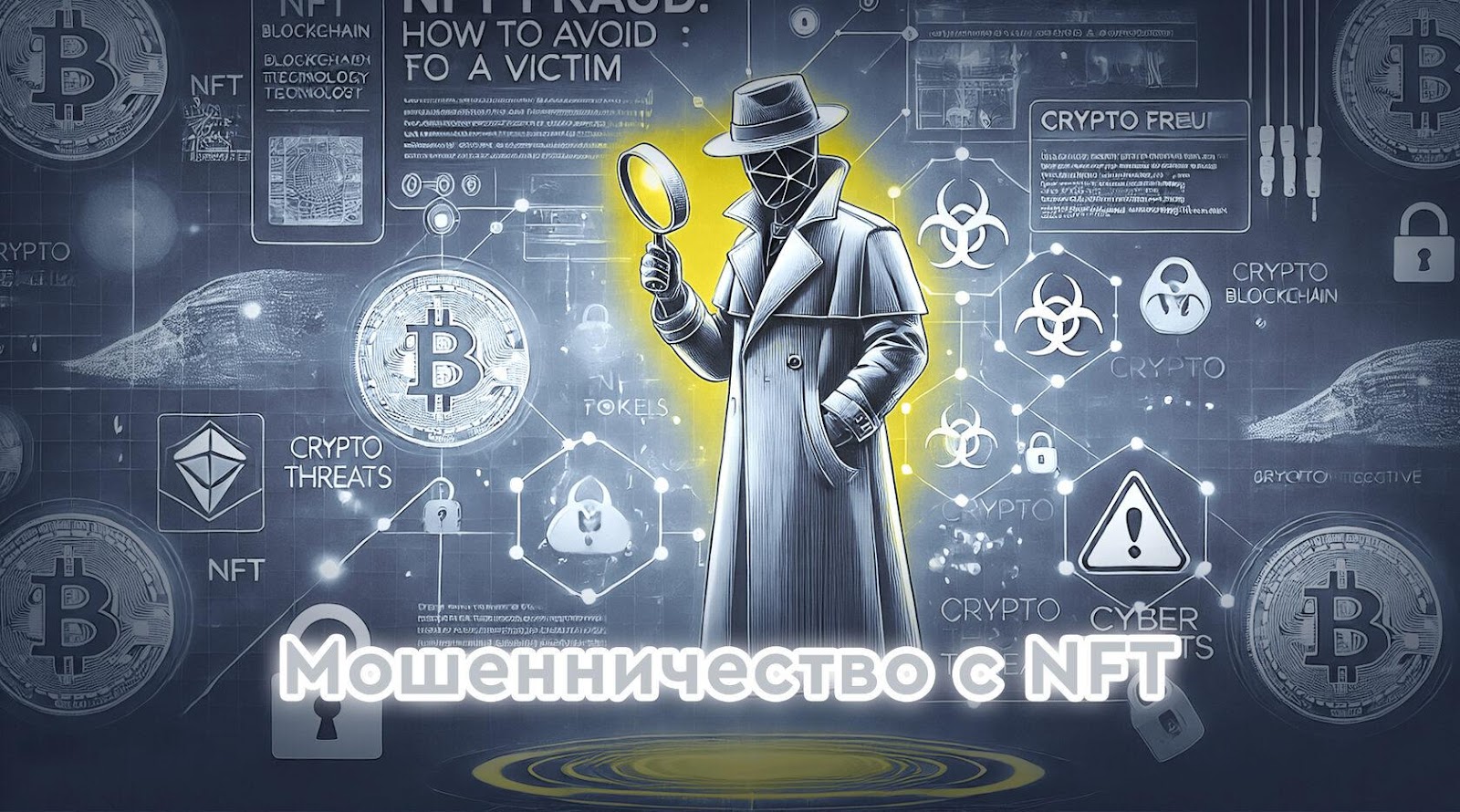In recent years, blockchain technology and non-fungible tokens (NFTs) have captured the attention of a wide audience. Every day, new projects emerge, many of which promise staggering profits. However, as the popularity of these digital assets grows, so does the number of scammers. It is important to understand the basic mechanisms of fraud to protect your investments and maintain financial security.
What are NFTs and Digital Assets?
NFTs are unique digital items that represent virtually anything from artworks to in-game items. Each NFT is registered on a blockchain, ensuring its uniqueness and protection against forgery. Digital assets, in a broader sense, include cryptocurrencies, tokens, and other assets based on blockchain technologies.
However, despite their uniqueness, the NFT and digital asset market has attracted the attention of scammers. For every successful project, there are usually several scams that use algorithms and mechanisms similar to real assets. Therefore, any potential investor needs to familiarize themselves with security basics.
How to Avoid NFT Fraud
There are many ways in which fraudsters can deceive investors. The key point is awareness and vigilance. Here are a few steps that can help minimize risk:
- Project Research: Before purchasing an NFT, conduct thorough research. Learn about the team, its reputation, and experience. Check if there have been previous successes.
- Price Comparison: If the NFT price is significantly below market, it could be an indicator of a scam. Compare prices with similar tokens and check why they are cheaper.
- Origin Verification: Genuine NFTs have a clear provenance. Check the asset's history and see what previous owners had the token before you.
Fake NFTs and Digital Assets
One of the most common types of fraud is fake NFTs. They may look real but have no genuine value. Scammers can create copies of popular artworks and offer them as originals. Such counterfeit NFTs can lead to serious financial losses.
Identifying fake projects can be challenging, but certain signs can help:
- Lack of information about the team. If a project does not disclose information about its creators, this is already a red flag. It is important to know who is behind the project, as a lack of transparency may indicate fraud.
- Unclear conditions. If participation conditions are unclear and confusing, it might be a scam. They may promise high returns or exclusive offers but ultimately deceive the buyer.
- Active promotion on social media. Projects that heavily advertise themselves on social media but lack a clear business model may be fraudulent. Be cautious of overly aggressive marketing.
- Community feedback. Read reviews and user comments about the project on various forums and social networks. Fraudulent projects often ignore criticism or quickly remove negative reviews.
Scammers in the NFT World
With the emergence of new technologies, we also witness the emergence of new fraud schemes. Scammers can use various tactics to deceive investors. For example, they can create fake trading platforms that look like real ones to obtain users' credentials.
- "Pump and dump" scheme. Scammers may launch projects to "pump" the token's price. They create the illusion of popularity and then quickly sell their assets, leaving other investors with devalued tokens.
- Fake websites. Sites where you can purchase NFTs can be easily faked. They may look identical to official ones, but in reality, you may lose your funds. Check URLs and make sure you are on official sites before making any transactions.
- Social media spam. Another way of fraud is using spam in social media. Scammers can create fake accounts to offer investments in "miracle projects." Be careful with such offers and never engage with unknown individuals.
Protection Against Digital Asset Scams
To protect against fraudulent schemes, security measures are important. It is important to have a thoughtful approach to investments and stay informed about current market trends.
Education and self-education. Investors should actively learn and keep up with new trends in the NFT and cryptocurrency markets. This will allow them to quickly identify fraudulent schemes and make informed investment decisions.
Use trusted platforms. When buying or selling NFTs, always turn to trusted platforms. Study reviews, reputation, and history of the platform before making any financial transactions.
Long-term investments. Long-term investments help avoid the noise of short-term trends that can suddenly devalue your assets. Choose projects based on their real value and possibilities, not just on loud claims.
Mutual assistance among investors. Become part of the community of NFT and digital asset investors. Interacting with other participants can provide you with useful information and assurances about the reliability of projects.
Fraud with NFTs and digital assets is a serious threat for both new and experienced investors. Being vigilant and informed are key points when dealing with these assets. By applying simple security principles, you can significantly reduce the risk of losing your investments. Remember to always research projects, use reliable wallets, be cautious with offers, and stay updated on new trends in the digital asset world.


